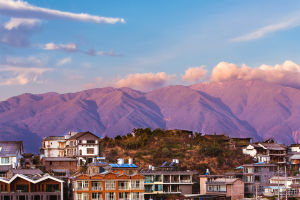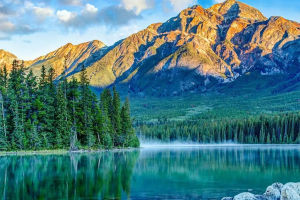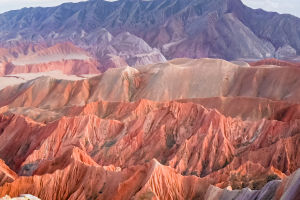The Mongolian people, who have been nomadic for thousands of years, live by water and grass and need a building that is easily disassembled and provides warmth to accompany them always. This is an ancient wisdom evolved to adapt to the living environment.
With the spread of Mongolian culture throughout the country and the world, the yurt and Mongolian people have formed a fixed connection in the minds of outsiders and become the best carrier of the humanistic scenery outside the country.
The Mongolian plateau has low and uneven rainfall, unstable water sources, dramatic climate change, and particularly difficult land resource utilization. To effectively use resources in such a harsh natural environment, cattle and sheep, which can efficiently convert weeds into protein, are the best intermediaries.
However, the precipitation and pasture on the Mongolian plateau cannot support long-term grazing, so nomadic grazing has become a sustainable use of pasture. This has made horses, carts, and demountable houses (yurts) a necessity.
While cattle and sheep can live in the open air at any time because they are covered with fur, humans can hardly tolerate such living conditions. The yurt is a product of nomadic life and has been handed down and developed by many nomadic people in the highlands. It has become what we see today.
The more difficult the conditions are, the more prominent the role of this kind of construction. Accordingly, the frequency of transhumance is also higher, and the scope is larger.
The yurt structure is very simple, mainly consisting of doors, skylights, mesh supports, felt, and ties. These are all building materials that can be easily found on the plateau, in a completely different way from the Han dynasty's way of selecting materials that require complex, professionally burned products such as bricks and tiles.
Yurts are also very easy to assemble and disassemble and are ready to be erected at any time according to local conditions and materials. Whether it is a historical palace mausoleum or a common yurt inhabited by herdsmen, the basic idea is the same, although there are slight differences in scale and form.
When making a yurt, herdsmen first choose a place with suitable water and grass, draw a circle according to the size of the yurt, and set up retractable mesh supports along this circle. They turn the door of the yurt towards the east and fix the frame. The yurt is light and tough, not easily deformed, and not cracked.
The size of the yurt is determined by the number of "Hana" in the skeleton, and the height varies with the degree of expansion and contraction of the "Hana".
The variable diameter and width provide the yurt with adaptability in many climates, so that wind, rain, snow, and scraping cannot shake the Mongolian's beloved home. For example, in the summer when it rains a lot, herders will adjust the yurt slightly higher to increase breathability and lower it when it is windy to reduce the wind area.
The top felt of the yurt is often painted with a traditional Mongolian auspicious cloud pattern embroidered with blue cloth. The top felt is mostly decorated with auspicious lines or horn patterns, and the surrounding felt is generally decorated with a back pattern.
The yurt is a mobile home that accompanies the Mongolian herdsmen throughout their lives. In addition to the stove fire that must be in the center, the yurt can be furnished with cabinets tables, and chairs to support the life of fixed grazing in the pasture. In general, the furnishings and location inside the yurt are fixed.


